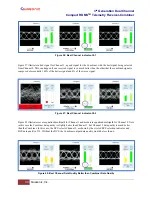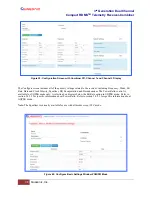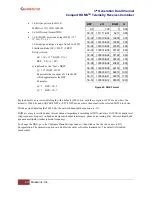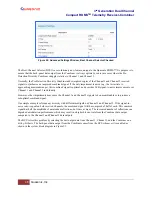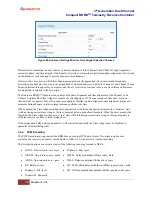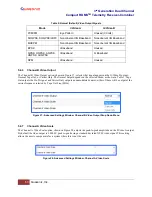
3
rd
Generation Dual Channel
Compact RDMS
TM
Telemetry Receiver-Combiner
39
Quasonix, Inc.
Figure 43: Settings Window, Data Polarity Selection
5.4.2.5
Data Quality Encapsulation (DQE)
Data Quality Encapsulation is the process of bundling data quality information along with payload data. This
information is intended for use by a Best Source Selector (BSS) to optimally select correct payload data bits from
amongst multiple streams of potentially errored payload data. Note that optimal performance can only be achieved if
all sources of input to the BSS have independent errors; that is, related sources of data like Channel 1, Channel 2,
and Combiner from a single receiver should not be presented to the BSS simultaneously.
Data quality is encoded as a Data Quality Metric (DQM). When calibrated per a standardized procedure, DQM
based on bit error probability (BEP) allows DQE from multiple vendors to interoperate.
The Quasonix DQM is based on statistics developed deep inside the demodulator. Bit Error Probability (BEP) is the
calculated likelihood that a bit is in error. A very low BEP can be determined from only a few bits. BEP does not
require any known data and can be determined quickly and accurately from demodulator statistics. It is an unbiased
quality metric, regardless of channel impairments. The DQM is calculated directly from BEP.
The basic DQM calibration fixture is described in the following steps and illustrated in Figure 44.
1.
Input corrupted data (with clock)
2.
Extract the frame sync word
3.
Measure the BER of payload data
4.
Compare DQM (converted to BEP) to measured BER and record/store on a packet by packet basis
5.
Post process BEP and BER to develop score
Figure 44: DQM Calibration Fixture Process
The DQE format includes a header consisting of the following:






